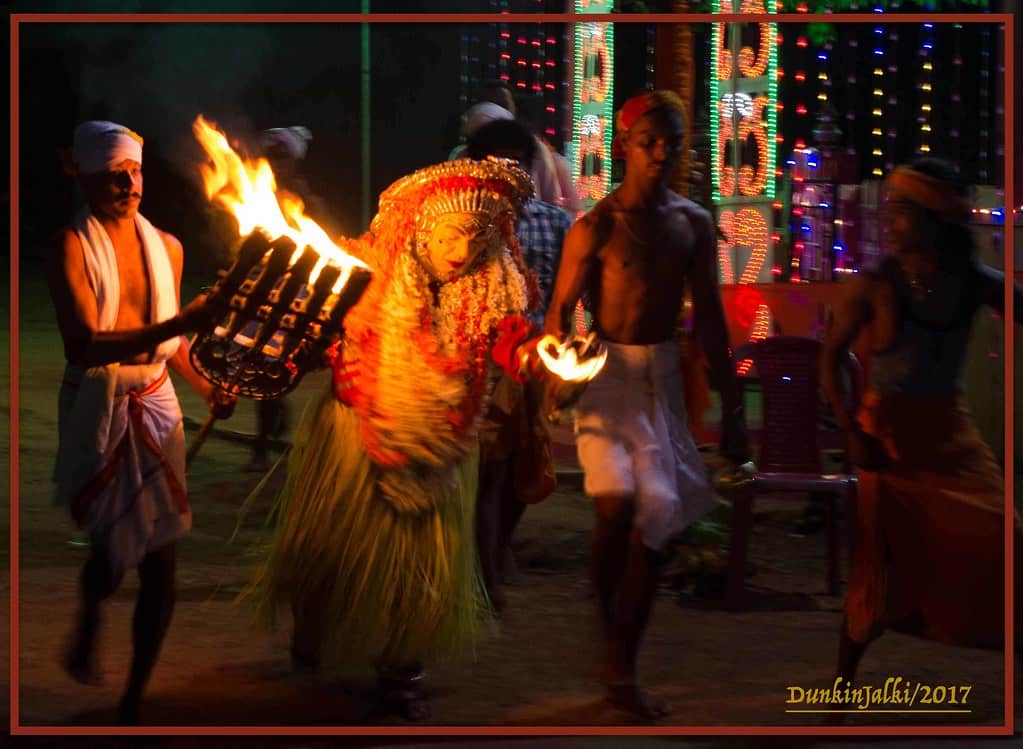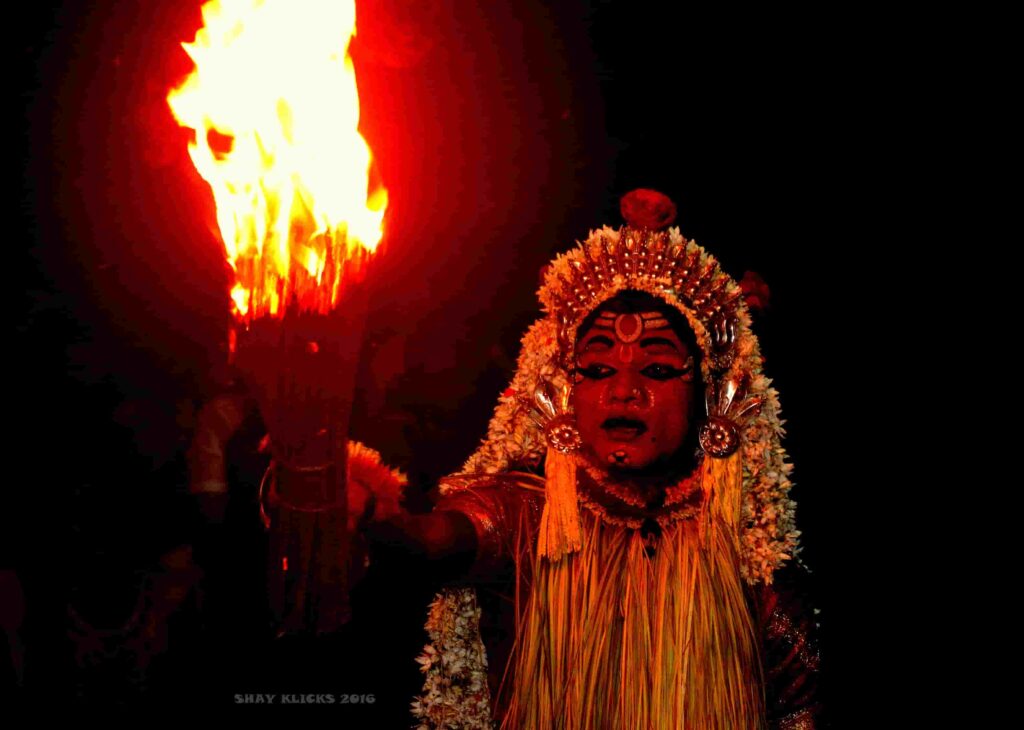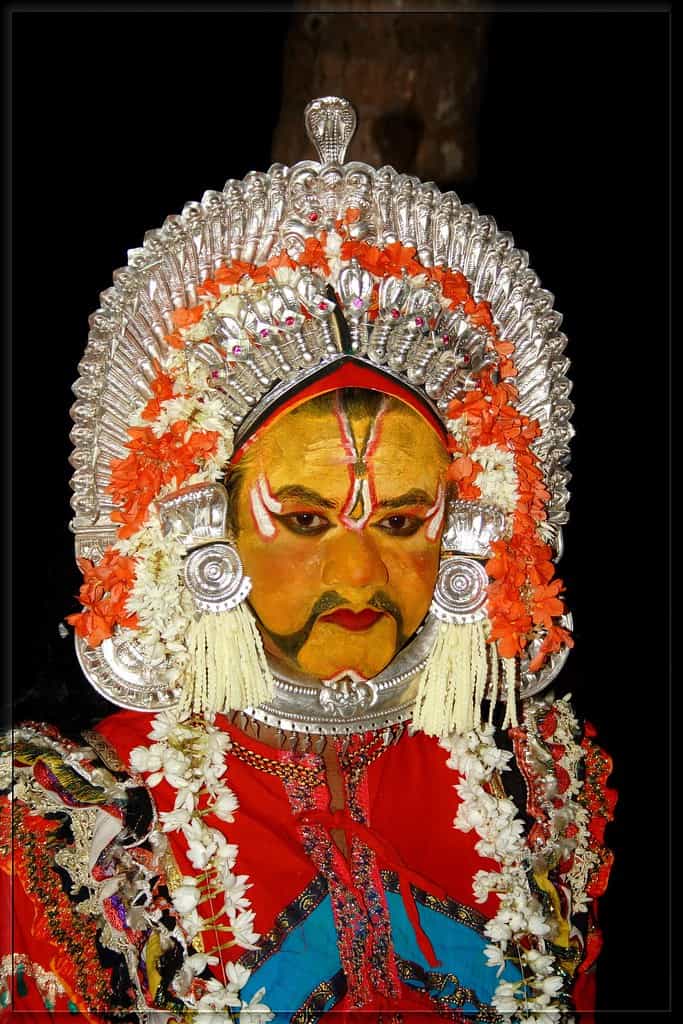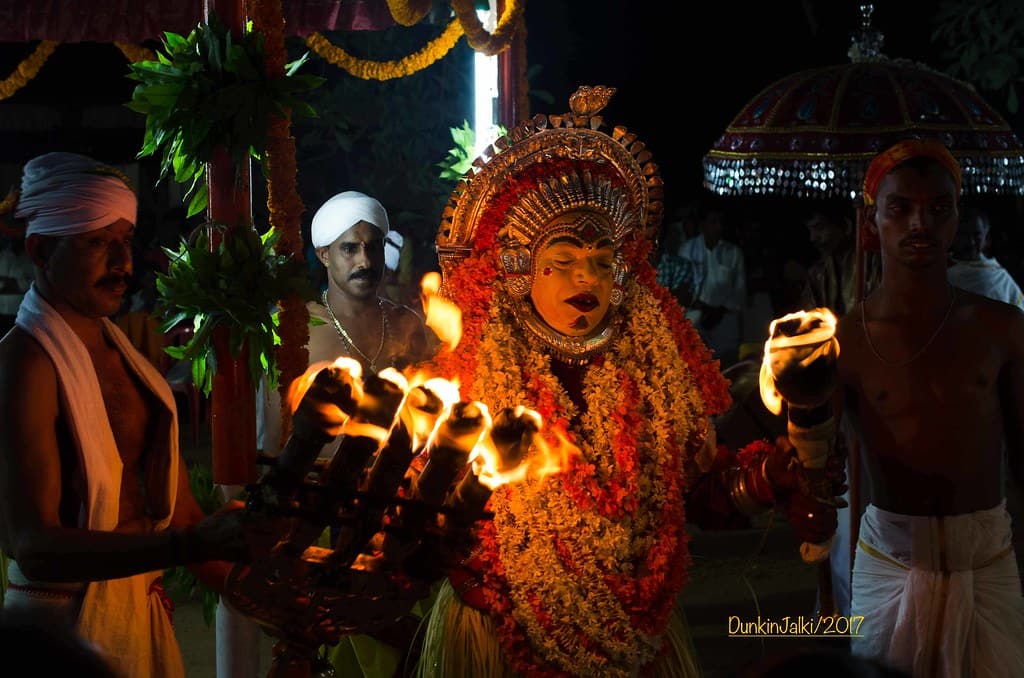
Complete Details About Bhootha Aradhane
Bhoota Kola is the ancient Tulu tradition that villagers organize to ensure peace in the village. Bhoota Aradhane, also called ‘Bhoota Kola’ or ‘Nema’, is characterized by storytelling which extols the virtues and deeds of the spirits, thereby inviting the spirit to possess the impersonator, who dances nightlong to rhythmic hypnotic drum beats.

Meaning
Bhoota means spirit and kola means play in tulu. The dance is highly stylized and performed as part of ‘Bhootaradhana’ or worship of the local deities worshipped by the Tulu speaking population. The villagers and their ancestors believe that certain Gods protect their lands and take care of their everyday affairs even today. It is believed that the anger of these spirits could bring bad luck.

The coastal Karnataka is known for two art forms, namely Bhuta Kola, a highly stylised version of the ritual dance of the spirit impersonator and a fine tradition of Yakshagana, creating a world of divine and supernatural beings with all the paraphernalia of costumes, make-ups, music, dance and dialogue.
Departed souls, natural phenomena and animals are worshipped during the Bhootha Aradhane. Amid drum beats and bursting crackers, idols representing bhoothas or spirits are taken out in a procession.
he night-long ritual is a dramatically enhanced blend of literature, music and local beliefs, and is most of all marked by the piety of those participating in this ancient form of spirit worship.
Important aspects of Bhuta Kola are possession, trance and the dialogue of the possessed impersonator with the devotees. The Bhuta impersonator behaves like an incarnation of a concerned spirit, listening, solving problems, warning, comforting the devotees. He acts as a healer and solves the legal and judicial problems of the village.

Worship
Several kinds of ghosts are represented through this folk dance. Kallurti, Koraga Taniya, Shiradi Bhoota, Koratti, Punjurli, Kuppe Punjurli, Kalkuda, Ali Bhoota, and many others are revered in places like Bantwal, Puttur, Uppinangadi and Mangalore.
Rajya daiva, Kuntikana Dhoomavathi, KinniMani, Guliga, Koraga, Poomani Ullakalu and Raktheswari are the bhootas worshipped in temples.
Kola is also an occasion for villagers to make offerings to their gods, as it usually takes families about a month to prepare for the Kola ceremony . The Bhoota-Kola ceremony is usually held from December to May. During this month, the villagers help the main family and worship their village God together once or twice a year or on special occasions.
The ritual comprises 16 steps meant to propitiate the spirit. This includes dancing to loud, rhythmic and hypnotic music, and offering ritualistic sacrifices including rice and chicken to the spirit.
The people of Tulu Nadu follow a tradition of dual worship that includes worshipping the puranic Gods as well as the local spirits. The puranic Gods are worshipped in temple under the leadership of Brahmin priests and the devotees are mere spectators receiving offerings and as such cannot be approached directly. On the other hand, the spirits are the localized and personalized deities who share a more intimate relationship with the devotees.

Tourist Attraction
Bhoota Kola is not a tourist event and is not advertised much in mainstream media. However there are no restrictions on who can witness the performances. While staying in Udupi or Mangaluru district you may check with your local host for any possible Bhoota Kola performances coming up.
During the performance of this form of dance the dancer is required to make up his or her face in a specific way and wear certain costumes and jewelleries. The dancers decorate themselves to resemble ghosts.
Modern View
Despite the arrival of globalisation and rapid modernization, Bhoota Kola still remains an intimate part of the life of the people in Tulu Nadu. The purists have derided the incorporation of film tunes by musicians during the Kola. The younger generation of Tuluvas, though skeptical about the powers of the spirit, still believe in the rituals.
Movie Kantara
On this ritual, a movie is recently released named Kantara. If you see this movie you can have more information about it. In this movie, you can see the performer how beautifully have done this fierce folk art with an aggressive look. Now a Controversy is also going on that this ritual belongs to the Hindu part. This movie now becoming the second highest-grossing Kannada film of all time beating Yash-starrer ‘KGF’.
FAQs : Bhoota Kola.
Why is Bhoota Kola performed?
A ritual called nema or kola is performed for ghosts/gods.
Is Bhoota Kola real?
Bhoota Kola is an annual ritual performance where local spirits or deities are worshipped.
Which instrument is used in Bhoota Kola?
During the performance, musical instruments like ”mouri’ (wind pipe) ‘taase’ (percussion) and ‘shruti’ (wind pipe) are used.
